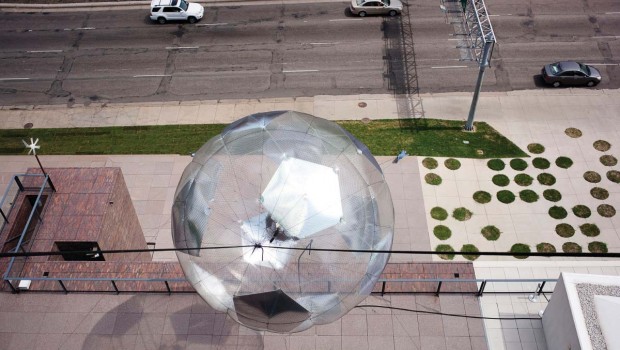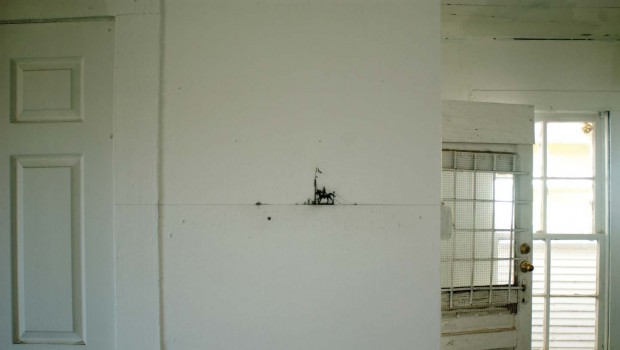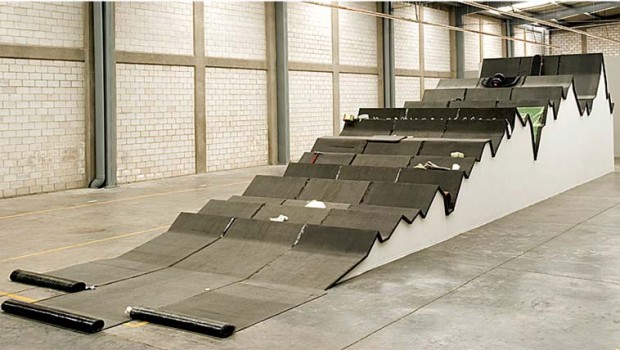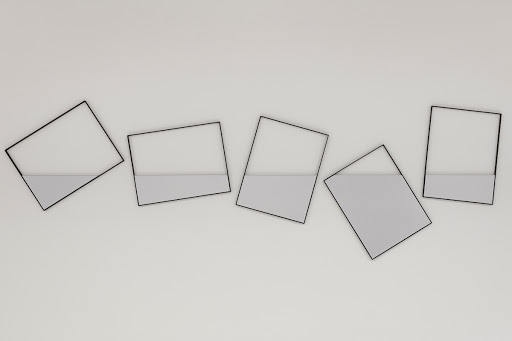Tomás Saraceno: Celestial Utopia
Jeffrey Bowen
THE UTOPIAN
Download Complete PDF / Descargar
Colossal clusters of inflated plastic spheres, banded together with polyester nets and anchored to the floor, walls and ceiling. Countless chromogenic prints of vast, earthly atmospheres and delicate spider webs placed adjacent to interconnected city roads viewed from miles above terra firma. A massive, wall-bound digital diagram of interlocking orbs floating high above an urban landscape. These are but just some of the works visitors can see in the new Tomás Saraceno: Lighter than Air exhibition at the University of Houston’s Blaffer Gallery, on view from May 14 through July 31, 2010.
The first large-scale museum exhibition in the United States for this German-based, Argentine-born artist showcases twenty installations, sculptures and photographs made since 2003. Trained initially as an architect, Tomás Saraceno follows in the tradition of visionaries such as R. Buckminster Fuller by looking to scientific principles and advances in technology to develop ideas for future sustainable communities. But instead of utopia on land, Saraceno looks to the sky for his inspiration. His long term project entitled Air-Port-City (2001-present) envisions networks of mile-long geodesic balloons that provide living environments aloft in international air space. Free from geopolitical borders, these habitable cells would combine and separate much like drifting clouds, challenging concepts of nationhood and land ownership.
In the exhibition at Blaffer, the immense wall-bound, laser-printed Liverpool/Flying Garden/Air-Port-City (2008) illustrates Saraceno’s heavenly utopia. It is placed in context with the artist’s three-dimensional assemblages of inflated spheres, architectural prototypes of his aerial habitats. One of these is 32SW/Flying Garden/Air-Port- City (2007), a bevy of 32 plastic elliptical pillows. It contains Spanish moss, a plant that lives solely on water and airborne nutrients, suggesting that the presence of sustainable floating communities is what the future may indeed hold. Iridescent Planet, an enormous airfilled polyethylene globe, is suspended in the Blaffer’s high ceiling gallery. At roughly 20 feet in diameter, it is the largest work in the exhibition. Repeating hexagonal iridescent foil patterns make this hovering abstract soccer ball brilliantly glimmer in the gallery lights. The spectrum of colors radiating from the work is almost celestial, perhaps an intentional decision by the artist to accentuate the utopian appeal of his visionary dwellings.
Saraceno is internationally recognized for his prototypes that use the interdependencies of systems to ponder ecological questions that go beyond the natural world. The artist contrives environments that anticipate new socio-cultural platforms for experiencing and interacting with our surroundings. According to Saraceno, “Now there is an even better consciousness of sustainability in our lives on planet Earth. In this way, my work tries to explore and interpret the present reality, using technological innovations for new social objectives.”
Saraceno was born in Tucamán, Argentina, in 1973, and currently lives and works in Frankfurt am Main, Germany. Most recently, he has had solo shows in Berlin, Luxembourg and Copenhagen, as well as an installation in the 2009 Venice Biennale, Making Worlds. His exhibition at Blaffer was organized by the Walker Art Center in Minneapolis and curated by Yasmil Raymond, curator of Dia Art Foundation. Some of the works in the exhibition, such as Iridescent Planet, were conceived during the artist’s residency at the Walker. The residency was funded by the Nimoy Foundation, which connects emerging artists with institutions that can advance their careers. The exhibition’s loose connection to science fiction can’t be ignored: the foundation was established by Susan and Leonard Nimoy, the same Leonard Nimoy famously known for his role as Spock on the television series Star Trek and the show’s subsequent silver screen incarnation. While the Nimoy Foundation supports art, not science, I can’t help but to compare the utopian, space-bound world of Star Trek to the utopian, airborne world of Saraceno. It is an apt anecdote on how the creativity of art can indeed successfully converge with the innovation of science, the ultimate goal of Saraceno’s work.
Posted: April 20, 2012 at 7:53 pm











